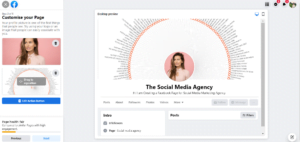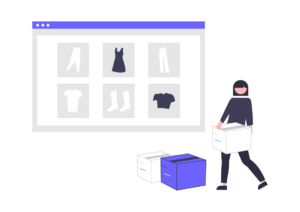We don’t just build great portfolio websites but also sell the services.
Everyone wants to work with you. You have to give him a proper reason why he or she worked with you. You can tell the most achieving thing in projects, the most exciting thing, the most difficult thing in the project, and how you handle it.
If you are a graphic designer, marketer, web developer, app developer, Tax consultant, and whatever, you can easily make a portfolio website and create more and more clients online.
Coding skills are not required for creating a portfolio website. You can simply make a website with drag and drop. It could be very easy to design.
1. Select a custom Domain Name
A lot of people make these mistakes using a subdomain like blogspot.com or other sites that offer a free domain name. You should spend some money to take your domain name depending on your choice. Usually, domain names are yournames.com for the portfolio site, but it depends on you and you. The domain name helps to find you in the Universe of the Internet and makes a quality brand.
2. Do not Copy Others Websites
When creating a portfolio website, many people buy a template from an online website. Don’t keep all the template features, as it seems like many of them are only changing the text; color, fonts, positioning of the wizard, or other things that remain the same. Make changes in the color, and positioning of widgets to be unique. Don’t copy any content from the Internet. It will be captured by the user who visits your website, so don’t copy anything from outside.
3. Make Categories of your work
You can divide your project into small categories to know better about you. The Employer gets the most significant features of your work; for example, suppose you are a digital marketer. In that case, if you are working with hotels and restaurants, you have many chances to get clients related to hotels and restaurants because you are the leader in that field.
Filter your projects: After making a list of all projects that have your involvement and filtering out the different categories, make a short description of your role in that project, and highlight the best thing in the projects.
4. Insert Image if Needed
If you have images related to the projects that are compulsory to mention. Without an image doesn’t look very helpful. If possible, you can also mention a video. If you are a web designer, you can easily take a snapshot and make it visible on your website in the project section. You can also mention that the link to that project easily finds the link project you have done.
5. Add Testimonial to your Portfolio Website
The testimonial is very important. If you are working with a company, they can post a review on their website about you and your work and give a reference link to your portfolio site—that review you can mention on your portfolio website on the home page. A small section shows multiple testimonials along with the client’s website which makes it very very engaging. You only mention a small eye-catching description along with a company logo or personal image on your portfolio website.
Here are the best examples of testimonials:

6. Give credit that works
You can discuss with the project manager to mention your name in the project that you have worked on. Some company mentions the project role and name; for example, you are working on a project on website development. There are many roles in the web development process like a web designer, graphic designer, programmer, and many more, so you can give credit to the person or company if possible.
7. Tell A Story To Motivate
Without a story, everything is useless. Your client gets to understand who are you, from where, from how, your region, and many other things. You can create by adding a graphic effect with javascript code and also in an animation that quickly understands and touches the heart of the client. Don’t be afraid to tell the story behind your most successful project and explain how the work was completed.
8. Mention Vision or Mission
To achieve anything, we have an excellent Vision and Mission, so you must mention the Vision and mission of your portfolio websites. Don’t do the confusion. The client wants to mention a vision or mission.
9. Start a blog on your portfolio
You can start a blog on your portfolio website that relates to your topic. The blog will help more and more to grow in a better way. Creating in-depth content makes your client educated with your own experience, and knowledge, and update the content regularly when required to update yourself and your client. And also, online people who look at the topic on your portfolio website.
10. Always Be Present For the Audience
If your visitors look to touch with you, so you have a contact form mandatory or another medium to connect with your audience.
11. Include your social media profiles
To be aware of people about you, It is essential to be active on social media handles. If you are not active on social media, try at least some social media like Linkedin, Instagram, Facebook, and Twitter. There are many social media platforms where you promote your business for free organically. If you do not have time to handle social media platforms, you can do one thing you can keep an account on social media platforms, and whenever you have any update or any blog post on your website, you can post on your social media.
12. Introduce Yourself
If you are a person or group, don’t be scared to introduce yourself to the website. If you are in any field, one photo with a white background specifies your skill and a short description of you and your skills.
Everyone has a unique thing to identify. Make a good logo that makes a good impression and sets your image in the mind of the person who visits to look helpful.
13. Always up to date
Whether it is a website or a blog, always be up to date with the trends.







